|
I admit that I was very resistant to some modern ideas of intersectionality, as well as other social justice reforms. It's simply because I couldn't work out how to use them and how they would positively effect change - which is what I really want, and I think it's what most people want. I find wishy washy concepts unhelpful and worry they just create confusion, polarity and divisiveness. However, after some thought, research and discussion I'm now more on board with many concepts and in this blog I wanted to explore how I found it helpful to see how intersectionality can be PRACTICALLY HELPFUL to positive social change. HOW I PUT INTERSECTIONALITY INTO MY PRACTICE Here are 6 ways I try to use intersectionality: 1. Recognise my own identities on the wheel of power / privileged: Here is my personal example, which is a fascinating exercise to ty for yourself:
My Privileges / Powers: - Cis Gender - White - Male - Citizen of wealthy, democratic country - Living where I grew up, close to family - English speaking - Middle Class - Uni Education - Slim - Robust Mental Health - Mostly Able Bodied - Mostly Hetero Sexual My Marginalization: - Kinky - Queer - ADHD - Spinal disability - Polyamorous - Not much money - No property (renting) - No inheritance - Solo lingual Recognising this has been an incredible step for me. It opened my eyes to my privilege and also areas where I have struggles. It makes me consider how to use my privilege well and also how I can ask for help or do some work to include those parts of me that society marginalises. 2. Consider others around me. I talk about these struggles with people around me. I learn, via consideration and conversation, about the nuances of discrimination people face. I love doing this wherever I go. It feels lovely to see and acknowledge people's invisible struggles with love and care. I think the positive change is that it helps include more people and spreads good feelings. 3. In groups or 1:1 I try to prioritize the voices of marginalized people. This doesn't mean others voices are unwelcome or don't matter, it's just that we need to balance the power by slightly prioritising those with lived experience. I try to do this in my groups, which feels amazing and I think increases our social awareness. 4. When planning events I consider the marginalized traits. I try to be clear in my communication about what the event includes for an how. Some events are not for everyone and its important to acknowledge that. I also try and make open events as inclusive as possible. I can do this by asking people about their needs and offering some accommodations, up front. This creates positive change for people coming, but also sends a message to the world that we should work hard to include others and to be clear how. 5. Collaboration in events: I strive to collaborate with people and/or provide resources for people from different communities, issue areas, and sectors to promote transformative change. This celebrates marginalized facilitators and includes more people in the world. 6. If collecting data - I try to make sure that data collection does not overlook the experiences of individuals with intersectional identities by offering multiple choices and also an 'other' box. This raises our real social awareness. You'll see this on my sign up forms. In the end intersectionality is an obvious concept, which I think we can all get behind, but I challenge you and myself to really consider HOW we can do this. I hope this post has inspired you. Feel free to comment how it has or if there are other practical suggestions for how to do this. I hope to see you at one of my group workshops soon. Warm wishes Neil PS. I was inspired by this blog: https://opportunityagenda.org/messaging_reports/ten-tips-for-intersectionality/
5 Comments
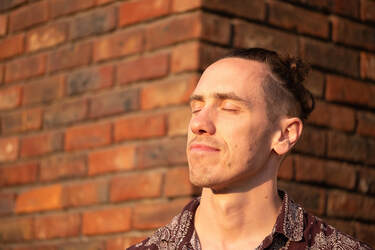 As I work with clients I heartily encourage them to love themselves through caring for this incredible organism that they are. We are a body. You can enjoy the idea and feeling of being a spirit too, if you like, but what we know for sure is that this body is the thing that allows us to have a life, here and now, on this Earth. Unfortunately people (including me) sometimes feel that it is a drag 'having' to care for the body. It has all these constant 'needs' and gives us 'pain'. Yeesh! MINDSET This mindset is understandable. We are all busy and important people and we lose sight of the truth of life. We get caught up in 'doing' so much that everything we 'do' becomes a means to an end - an obstacle to achieving our goals! GOALS! This goal orientated way of being is great for getting shit done. The unfortunate side effect is that life things become chore-some, instead of awe-some. That sucks. Again, I find myself in this state sometimes - overly focused on the goals and neglecting my beautiful body. THE BODY FEELS FOR A REASON When we remember that the body feels so good with self care we love to look after it. Stretching, exercise, eating well - all these things feel very easy. When we also remember the Polyvagal theory we can really care for our body in a way that helps our underlying state. We have three states of reacting to the world - Parasympathetic (rest and disgust), Sympathetic (Threat activation or Fight/flight/Fawn) and Dorsal Vagal (overwhelm/ shut down - Freeze, Flop,) . With the awareness that these require responding with different ways of breathing, posture, movement, voice - upregulating or downregulating and that these are skills and disciplines that take time and practice - this can be seen as a chore or a fantastic insight. The first thing I do is raise my awareness with a code word - a traffic light. If I realise I'm 'activated' I say 'amber' to myself and take a moment to slow down and regulate my nervous system. When I say 'red' it's because I realise I'm feeling despondent and shut down, so I first do some activation movement and breath and then calm down to a 'Green' state. CHORE-SOME OR AWE-SOME The chore-some mindset says "Oh jeez! I'm so broken, it's so much work, it's endless!" We all fall into this sometimes. The awe-some mindset says "Wow! I'm so adaptable, my body works so well, it's always growing and changing!" This is the one I like to remember and practise. So I invite you today to meet your body with love and enjoy the incredible wisdom that is holds and communicates via feelings. If you need help with this let me know and come work with me 1-1 or in a group. Big love, Neil PS. here is a video of Peter Levine loving his work of trauma healing We need to rest. But what about “active rest”? It seems like an oxymoron, but what exactly is it and how can it help?
Self care and rest come under the same bracket, and it’s widely accepted that we need these things. The world is full of noise and chaos and it’s simply exhausting, physically, mentally, and emotionally. So we need a break. Is there a way we can take a more active role in this? This is what today's blog looks at. Media Addiction 'Doom Scrolling 'and 'Mindless Surfing' is not happening at epidemic levels, partly because we have been indoctrinated into media addiction since were were children, before our brain had even fully developed. This means we never rest. We fill every moment with media, often via screens or head phones - information about millions of subjects that we have no control over and largely just create 'mind pollution'. I've written before about how your attention is the product being exploited and seeing the real enemy is media influencers. Unhelpful rest A few years ago, the classic thing to do when you come in from work is to sit in front of the television and channel surf for a while. The modern equivalent of this is probably doom scrolling, which is where you stare at a phone and simply scroll through social media and binge on bad news. If that sounds familiar to you, don’t worry. It’s a common habit and doesn’t mean you’re a bad person. But it’s not exactly a healthy habit. People engage in these behaviours due to a combination of boredom and tiredness. You simply can’t be bothered to think of something to do, so choose something easy and mindless. But while it’s easy to do, this isn’t actually restful. For starters, you rarely feel satisfied after spending a few minutes or even hours doom scrolling or channel surfing. Instead, you might feel restless or even frustrated. Often people spend time staring at their phones instead of sleeping and, let’s be honest, are you actually enjoying it? Admit you are unwell The problem with mental illness is that we often feel ashamed of it because its not as tangible as physical sickness. If you had a broken leg you're more likely to self care without shame. With mental illness, which addiction is part of, we shame ourselves, get stressed and then need even more rest. Perhaps the most important part of rest - GIVING YOURSELF PERMISSION How do I give myself permission? This is the 'active' part of rest. Working with the mind. Recognising the inner resistance and shame. Talking to those parts of yourself. This is where I can help with 1:1 work where I can teach you how to see things more rationally and start to respect yourself in your inner dialogue. Different people need different types of rest at different times. The interesting thing is that, when it’s deliberate, your rest is rarely harmful. You can watch crap, you can do nothing. Do you enjoy watching TV or playing video games? Great. When we allow ourselves to do it we also naturally put BOUNDARIES on it. We set an end time and then I often use the 54321 method to get up and do something else. Perhaps you want to know where to watch F1 in Australia or something else - no problem. So long as you do it with full permission and actually allow yourself to enjoy this restful time, then when you're finished you'll feel refreshed and satisfied and you'll have renewed energy to do something else. I hope this message encourages you to give yourself a break, work with your mind so you can actively rest, when you need it. Big Love Neil This morning I did what I often do, my practice of checking in with my emotional vulnerability - my inner child. I've come to realise, through this practice, that most of the time I don't need to 'do' much in order to get into a centred 'adult' state, but I simply need to 'be with' the part of me that is vulnerable and let it have some voice. I'll explain more here in the hope that you, dear reader, will try and do the same and discover how easy it is to change your state. Even as I type the words 'inner child' I internally cringe. I used to think inner child work was such a load of nonsense. My father raised me to be hyper rational (whilst simultaneously not owning his own angry emotions). What I've come to realise is that whilst the rational mind is a powerful tool it is not in charge. The emotions are. Mark Manson describes this well in the conscious /clown car. If we don't acknowledge them, they will drive us into very difficult situations. In this blog I want to explain my theory of why that is and also what we can do about it - namely giving voice to our emotional vulnerability, in a safe space. A lot of my work is informed by Transactional Analysis (TA) - model of psychotherapy, created by Eric Berne in the 1950's. Like any 'model' it is not complete and perfect, but it can be a very useful 'lens' to view our interactions and the internal 'states' we respond from. The idea of this is that if we become aware of this stuff in our life we can break the patterns and create new, more helpful ones. Doing that isn't a purely rational process, as I'll explain below. Simply put the ideas are as follows:
Drama Tringle
These ideas feed nicely into the idea of 'roles' that we take on, when we get embroiled into drama. I've adapted these into my own drama triangle. Read more here. The reason it's hard to escape the drama triangle is that we are deeply programmed to respond from our Ego States, that it surpasses our conscious, rational mind. Escaping drama through Voicing Vulnerability, I believe there are three ways to escape the drama triangle, but first we have to recognise that we've been unconsciously pulled into it! The main way I do this is to take a pause, regularly. What next? One of the three ways is to work with our emotions and VOICE OUR VULNERABILITY. You see the victim mindset is linked to the adapted-child ego state. We adapted to act like a victim to receive strokes from inattentive (or overly critical / smothering) caregivers. We sometimes bring this behaviour into adult life (Eg. We go quiet and shy , or another adaptation might be acting out in inappropriate situations). What the child really needed was a safe space (and encouragement) to voice their vulnerable feelings and to receive positive strokes in the form of being listened to with love, co-regulation (soothing the nervous system from an emotionally regulated parent), empathising with the child's perspective and respect for their trying to overcome it. I have adapted this into a handy tool that anyone can use with themselves, or with another person. Activating the ELDER Voice is a powerful mode of expressing ourselves. Have you noticed that when you speak something aloud you also hear it? If you repeat it and listen you really get some interesting feedback effects in the body and the mind. With this in mind, and awareness of the different Ego States we can make it a regular practise to find a sage space to voice our vulnerable emotions. But where is this safe space? Well the best place is a private place, where no one else can hear. I use the car or I go for a walk in nature. Next we access that part of us that is the Nurturing Parent and the Free Child. We vocalise our distress to the parent, repeating it many times. Then the parent listens, soothes, empathises with and respects the child. This allows the child to feel seen, heard and loved and then the adult can come online and steer this human being! Here's the acronym to help you ELDER (Click here for full instructions) E: Express the Emotion: Allow sound or words, keep repeating L: Listen with Love: Hands on belly and chest and repeat I hear you, I love you D: Downregulate: Take a breath and rub the hands. Soothe the body. E: Empathy: Show deep understanding of the child's perspective. Validate that it makes sense R: Respect: Honour the child's efforts and achievements. Express pride and togetherness. My findings I have found remarkable things happen here when I do this. First - I feel better, more spacious, more calm, more open and more clear. I feel like I can get on with things. Second - I find solutions come easily. I remember more options available to me . Third - I bring this more into my life. I allow myself to voice my feelings and needs with clarity and ownership (instead of confusion and demanding of others). This has a positive ripple effect on others and we can have healthier adult to adult conversations. In the past I thought this had to be all cognitive work, with the rational mind, and I now see it is the emotions that sail the ship and I need to check in with them, give them voice, if I'm to sail the ship in the direction I consciously want to go. The good news is - it feels great and with practice its easy peasy! Working with ELDER and Ego States I have really adapted this into my personal practice and my work with clients. If this is something you're interested in come and work with me 1:1 or in groups.  To help see the value of this let's look at the story of Jo and Jae, two friends who lead similar lives. It's a cold, icy and wet Tuesday morning... Jo is woken up by the alarm at 6:50am and looks at the weather, through the window, hits the snooze and goes back to sleep. Jo does this reputedly until 7:30am when it's time to get breakfast. In a hurry Jo spills the tea and in a rush to get in the car accidently drops the keys under the car, in the icy rain! Jo is annoyed with the cold weather and worried about an important meeting at work. On the drive Jo is going too fast, the radio is too loud and Jo nearly hits an elderly person crossing the street. Instead Jo swerves and hit's a bollard. Jo winds down the window to shout at them, unaware of a police officer approaching to give Jo a ticket for dangerous driving! Jae is woken up by the alarm at 6:50am and remembers an intention to meditate. Despite the cold outside Jae sits up straight on the floor, under a blanket, tea steaming in front for 10 minutes, focusing on the sensations of the body and observing the thoughts passing across the mind. Jae feels more centred after this and checks-in by talking out loud and then setting an intention for the day. Today Jae remembers an important meeting and Jae decides to practice calmness in preparation and during the meeting. During breakfast Jae listens to calming music and in the car Jae drives carefully, enjoying the frosty trees and children throwing snowballs. An elderly person is crossing and Jae stops, winds down the window to say hello before driving off and smiling at the nice response. The difference in these two days is clear and it can be attributed to setting an intention the night before to wake up and create space to meditate and check in. This is something I try to do every weekday and I'm starting to open this up to others to join me. If you're interested check here to see if they are ongoing now. The structure I often use is the folliwng:
Finally it's important to get up and move. In the past I have allowed the time boundary to lapse and I can spend an hour reflecting and getting caught up in thinking. Instead make it a practice to stand up and DO SOMETHING. I often do a short stretch and then go get breakfast. I hope this helps you have a more wonderful day. Come join me on my daily Morning Meditation and Check In . Mindfulness is all about being in the NOW. I have created an acronym to help us remember to cultivate our curious and creative state. This is the thing that will turn suffering into life. Pain is inevitable, suffering is a choice. You can be lost in the suffering of your mental anguish - FOMO, guilt, worry, resentment - or you can choose to process these things:
Positively-Mindful is the name of my work because I want us to stay positive with our minds. One of the underlying thoughts here is the question ‘is the root of life, or your self or the creative force or ‘god’ or whatever you want to call it is either…
The old religions of Ancient Greece may have said number 3. The modern scientific take is often B, because the idea of a creator or creative force has been replaced by the idea of a random coincidence of events creating life in the primordial soup on planet earth. I argue the answer is A, because I can sense the love within myself, underneath all the conditioning of mind-made ideas and the ‘survival self’ my human organism has been forced to create in order to survive my teens. Let’s examine a little deeper why it is not B, for me, by looking at the main scientific theory of evolution. Evolution argues all life is connected and emerged from a primordial soup of dead molecules that somehow formed early strands of amino acids that eventually became DNA (Deoxyribonucleic acid) - the building blocks of all life on Earth. DNA is more complex than a modern smartphone, partly because it is able to replicate itself. Can a smartphone do that? There is code within DNA, which is as impossible to occur naturally or randomly as it would be for the components of a smartphone to occur naturally. It would be like just the right amount of heat and elements coming together to form a plastic rectangular filled with microcircuitry and a screen. Nope - impossible, even with an infinite timeline. Like proteins, the formation of RNA (polymers of nucleotides) requires complex cellular machinery. It simply can’t occur spontaneously. Even with the watchmaker idea evolution doesn’t explain how life emerged and the most plausible definition is actually that a creator is responsible, or that this is all a dream of that creator. It is a fascinating idea and to be honest we don’t need to know the answer but it is vitally important that we continue to wonder! If we stop getting curious we descend into cynicism or arrogance. When we stay open and curious we remain humble, which breeds compassion, love, inspiration, cooperation… all the lovely qualities of human beings that make us thrive. When I ponder this I often feel a surge of inspiration and tears stream down my face. The possibility is that someone or something created me. Are they still watching or are they inside me? Is this life more than just a random occurrence? Could it be a beautiful thing with more meaning than I currently know? If so, what is death and what will happen to me? Wonderful questions! Wonderful feelings. So keep your wonder alive today. As you meditate, ponder the impossibility of life emerging naturally and what that means to you. What is this creative life force within you? Connect to it and enjoy your fabulous and mysterious life, today, right NOW. Welcome to The Gentle Village, a place for us to connect, knowing we don't have to do it all alone. A safe space to explore Relationships. Vulnerabilities, Curiosities, Courage and a deeper connection with Life and Love in 2023
In this podcast, Jamie Catto (Musician, Film-maker and author of Insanely Gifted) and Neil Morbey (Mindfulness and Relationship Coach, Intimacy and Kink Workshop Facilitator) talk about topics of relationships with a focus on attachment, polyamory, monogamy, vulnerability, basic needs, boundaries, trauma and support. If you'd like us to discuss something please send questions to [email protected] Link the show: https://open.spotify.com/show/0RK43pnBZpOo6Mqc7YWHJ5?si=725695522f724116 Imagine if...
Imagine if… Eating fruit and vegetables was even more enjoyable than eating sweets and chocolate Imagine if…Working out and stretching your body was even more enjoyable that scrolling the internet Imagine if…Meditation and spiritual connection was even more enjoyable than YouTube short videos Imagine if…Reading and writing was even more enjoyable that internet shopping Imagine if…Talking with friends was even more enjoyable than browsing the news Imagine if…Going outside and appreciating life was even more enjoyable than staying in and watching TV or browsing the internet Imagine if…Stillness and silence was even more enjoyable than filling the mind with input and stimulation Imagine if…You loved mind-body practices even more than you love vegging out Imagine if…You found more pleasure than you’ve ever known in connecting to your sexual power than you ever found in quick porn Imagine if…You loved intimacy with your partner, seeing them and being seen, and found it even more enjoyable than isolation and internet zombie mode Imagine if all these things were what you loved. Imagine if you did these things daily, because you loved them Imagine how you would feel and be if you craved these empowering practices and those other, autopilot addictions just seemed as odd and unpleasant as eating your most disliked food and drink, When the mind-body is aligned to the truth it’s as natural to not do those things as it is to avoid dirty and unhygienic things. Because those things are toxic. We realise that the healthy things are delicious, fun and invigorating. It’s so easy. Imagine if you just loved life and lived in a way that helped you You’d feel amazing You’d be so grateful You’d be buzzing with positive energy And life would be fun I wrote this for myself. I’m on a journey to help myself attain this attitude of mind and body. If you’d like help with this on your journey I help others with mindfulness practices, coaching and mentoring. I help people find more intimacy in themselves and their relationships. I help people shift their mindset to enjoy more things that help them and see the truth behind things and people that are toxic for them and naturally stop seeing and doing them. If you’d like to work with me click here: https://www.positively-mindful.com/11.html The study of philosophy enhances a person's problem-solving capacities. It helps us to analyse concepts, definitions, arguments, and problems. It contributes to our capacity to organize ideas and issues, to deal with questions of value, and to extract what is essential from large quantities of information. The problem with philosophy is that it can go on and on and people can begin to believe the ideas they entertain. This is what many call BELIEF SYSTEMS. I shorten this to BS. DOGMA = DOGMUCK When we deeply hold that our BS is true, and then whine on about it tediously and fall into what I call 'dog muck' (AKA Dogma - defined as a set of principled that one considers inarguably true). For example when a religion believes that it is the 'one true way to divinity' this is a dogmatic belief. People even have wars to try and protect this BS, not realising it is dog muck. Jeez! FATALISM vs DETERMINISM There are two philosophies of the world I think are important to consider. Fatalism and Determinism. Fatalism is the theory of 'fate' as in 'fatal' - a focus on the end. The idea that there is some destiny that we cannot avoid, although we are able to take different paths up to this destiny. Death is an obvious example. We know death is our fate, but not how (or why). Although we don't really know if death is the end. Perhaps it's just a point on a journey... hmmm... Determinism, however, is the theory that the entire path of our life is decided or 'pre-determined' by earlier events and actions. Karma is another word for this. Every action has an equal and opposite reaction and we are currently living the result of trillions of prior actions stemming back to... well, um... we don't know. A big bang? But where did that come from? USING BS TO HELP ONESELF My friend J uses Determinism to help lessen emotional pain and to end tricky discussions. We might be looking at a deep emotional issue and then he might say "Yes, but we have no free will anyway, it's all pre-determined, so fuck it." We usually laugh it off and get on with life. Is he using the BS of determinism to wriggle out of looking at his very human emotional pain? Yes and no.... Thankfully he knows that this is just an opinion and he doesn't hold these beliefs as dog muck. It's also very healthy to hide from our own pain sometimes, because we need time and compassion in order to come to terms with our pain. It also helps to be aware we are doing it, otherwise we risk deluding ourselves and falling into dog muck. BEYOND OUR TANTALISING IDEAS IS THE BODY AND LIFE With time we can remember that beyond our thinking our bodies need things in order to grow. Thinking round and round often distracts us from this. Thoughts are incredibly alluring and we can get drawn into thinking at the expense of our deeper and more real needs. I personally believe that the BS of 'spirituality' is actually a disguise for a deep need for connection. Us humans, being social animals, often feel lonely and spirituality is the BS that often gives us an excuse to connect to something greater than ourselves - a community and perhaps even a 'god'. This is very comforting for a human being and comfort is also a need. I think if we pondered the underlying needs more often we would see that a lot of our BS is pointing to unmet needs and then we would focus on those instead of fuelling the BS and creating dog muck. EXISTENTIAL DREAD We see throughout history examples of people fuelling BS, creating dog muck and then having wars or ruining lives because of it. Most of this has been religious wars. in the 21st Century we worship money and power and don't have much BS in a god. This creates the dog muck of Nihilism - a belief that there is nothing else to life and in the end it will be nothing. This can take away our hope and even our agency and willpower., leading us to 'existential dread''. However, even this BS can be lightly held and seen as pointing to a need for... meaning. We human beings seek and need meaning in our lives. We often seek it in the wrong places and get lulled in by dog muck and then indoctrinated into a very unhelpful BS. . Kurzgesagt's take on 'Optimistic Nihilism' is a way to hold this more lightly and to then consider... what do I need now? LEARNINGS FROM THE MATRIX: SELF FULLILLING PROPHECIES In this dystopian movie a critical scene examines these philosophies in action. It shows how our BS can create a self fulfilling prophecy. In the movie 'The Oracle' tells Neo "You are NOT the One". This is challenging for Neo, because he sees Morpheus believes, dogmatically, that he is, to the point that he is willing to sacrifice himself and everyone else to protect Neo. This situation forces Neo to decide what is important and to do his best to protect Morpheus and everyone else, to live up to the expectation and to consider what was needed. Later, after Neo saves the world, Morpheus reveals he knew The Oracle would have said that Neo was NOT the One in order to create this situation.; "She told you exactly what you needed to hear". The events unfolded because Neo was forced to examine what was needed, instead of just believing something. This little scene with the vase encapsulates that so beautifully: BELEIFS ARE POWERFUL Beliefs help us to cooperate in enormous numbers. I highly recommend the talk and book by Yuval Noah Harari. He realised that humans living in a dual reality to help them to flexibly collaborate on a mass scale with strangers through the willingness to embrace fictional stories that create 'networks of cooperation'. Even money is a network of beliefs. We all agree to believe that a coin represents value, even though it is just a story. The belief in the story makes it truth, at least to humans. REPETITION OF THOUGHT: CONFIRMATION BIAS We believe things more strongly when we hear them repeated and then we look for evidence to support our beliefs, which adds more repletion. It's sometimes called an echo-chamber effect. This is important to remember. Soldiers will even give their lives to uphold the belief in the ideals of a country (after lengthy indoctrination in soldier training, through repetition). In the USA Donald Trump used repetition really well to drive him simple messages to combat complex and nuanced thinking. Slogans like 'Make America Great Again' ring through the ears and brains of his supporters and now they are so strong in their beliefs that they believe everything he says. I would say this is also happening all over the world, as the internet becomes a powerful tool for spreading ideas much like 'mind-viruses', repeating them for people, which quickly become BS and dog Muck! Supporters of a belief are drawn towards internet forums, news articles and websites that all confirm the beliefs and repeat them more, growing the belief in their minds. This feels strangely comforting, as humans cling to certainty and try to eliminate nuance, complexity and uncertainty. THE BRAIN AND BODY GET CONFUSED The result of all this information and misinformation is mass confusion and fear. We then CLING to safe sounding ideas, which often leads us down dark paths of polarisation and war. This confusion can also lead to placebo effects (where we believe a medicine will work and so that enhances its effects) or Nocebo effects (where we inhibit the power of a medicine because we think it won't work). All of this is why we have to be very careful in the following:
KEEPINNG OUR HUMAN HEART OPEN If we don't want to fall into dog muck we can find inspiration from mindfulness philosophers like Eckhart Tolle, Alan Watts and Ram Dass (these are two important videos).. It is never as simple as this or that. It is complex and we must embrace the complexity whilst also remembering the simple truths of the human body, which has needs. and the human mind which must be questioned and treated with care. It is a powerful imagination. Remembering this can we focus on positive beliefs that invite us to take care of our bodies and of each other? To hold our opinions more lightly and not impress them upon others. To be careful about our sources of information and be aware of the power of repletion. To keep switching off the noise of the world, from time to time, so we don't get drawn down the dark paths of mind viruses and instead remember what is important - connection, care. compassion, complexity. What ideas inspire these values and needs to become important again? Big love Neil For worries: WORST tool.
For relaxing general judgements about yourself / others: THE WORK of Byron Katie, which I adapted into an acronym.
For changing pervasive self-critical thought into self-compassionate talk: SAFER communication with the part that is critical (this is more of a taking tool than a writing tool)
When people feel vulnerable the psyche creates a protector using our powerful EMOTIONS. Sometimes this gets out of hand and it becomes a sabotaging ‘panicked protector’ which inhibits rational thinking to prioritize the immediate safety and survival of the organism. In order for the panicked protector to calm down and allow a rational discussion, it must first feel a sense of safety. This is achieved by giving the vulnerable person space to share and be appreciated and acknowledged, feelings to be validated, respected and recognised before problem-solving or reconnection can happen. I do this when dealing with any vulnerable moment in a relationship that I care for. It helps us feel heard, understood and loved. Then we can calm down and communicate openly and honestly. This can also be done SOLO as part of a therapeutic technique called Voice Dialogues (talking to yourself). See the bottom of this sheet for more information. Make it a habit to change your self-talk and your communication with others using SAFER communication: S: Space: Make space to slow down your speech and breath and listen fully to the other (or to yourself). Sharing openly won’t happen without making space for it. Practice mindful listening (80% of attention on them, 20% on your body and breath), no interruption). Fully allow space for anything that arises, whether it is emotional, challenging, repetitive, loud or quiet. For solo work, I give myself about 3 minutes to be heard. Key phrases here:
F: Feelings: Respect the feelings. Focus on and validate whatever someone is feeling. Get into the feeling tone a little, with them Reflect the vibe of the emotion in your acknowledgements. If you are not sure what they are feeling try and guess. Connecting to yourself can help with this. What do you feel?
When you share, try and connect with how you feel. Slow down as much as you can. You can always ask them if they could acknowledge what you said and felt. After you have both shared you can begin a normal dialogue to problem solve or connect physically to create a loving connection. DRAMA and EMPATHY triangles Below is my interpretation of the drama triangle and how it leads into the empathy triangle. The goal is to give empathy to the parts that are alive. When we do this they naturally come down the triangle, through vulnerability, like sand through an hour glass, and we value, respect and celebrate the person, leaving them feeling seen, appreciated and settled. To read more about my Drama/Empathy Triangles click here. Using this tool SOLO
Working with yourself or another it may be you have to move between parts a few times to reach a point where the vulnerable/emotional part feels calmer and safe enough to have a more rational and solution-focused conversation. Using a mirror can help, as a focus. Try and finish with positive reassurance for yourself - connecting with the parts that are loving, wise and calm. Morning and Evening Practice: Self-Parenting Mirror Work This is a practice I do daily, sometimes twice a day. The aim of all this work is to develop unconditional love which will allow a natural outpouring of gratitude, blessings, generosity, kindness, curiosity, playfulness, motivation, optimism and effective and creative work. To get there we have to be with what is real, in it’s rawest form, first, then bring in the wise, loving part of ourselves to dialogue empathetically. This requires ‘space’. Logistics You’ll need:
Solo Method:
© Neil Morbey: Positively-Mindful 2022 As I worked with an anxious client I realised something: Most of my inner work and my work with clients is about unschooling us from the inaccurate and unhelpful narratives they have been indoctrinated into. We have all been brainwashed by well meaning adults before us. They were brainwashed too, it’s not their fault. It isn’t anyone's fault, but it is our responsibility.
IT'S NO ONES FAULT - IT'S OUR RESPONSIBILITY It’s my responsibility to notice when a thought is negative, that is to say, it depletes energy by arguing with reality. A negative thought is always inaccurate, wrong and untrue. It argues with facts because a part of me is too afraid to slow down and look at the truth of the situation, and because I have been schooled this way by so many people in my childhood and in my adulthood. Our culture is rife with poor quality education. An example from my life is that I was told I was lazy, so many times, and by so many people, especially key people (like Dad) that I started to believe it. In fact the whole concept of laziness is wrong. Laziness is healthy - it is a response to being tired. What most people call laziness is actually fear. We are laden with fearful thoughts and no one taught us how to manage that. In their own mis-education they just called us lazy. THE TRUTH IS OK The truth is simple. We are a happening, a process of continual change and sometimes that can be scary, because we are vulnerable organisms. Nothing is wrong with that. It’s all OK. It’s OK to be scared and for things to hurt and for change to be happening. Everything we ‘think’ on top of that is just thoughts, or ‘narrative’. These thoughts are powerful. They shape our experience. Some of them helpfully, others of them cause us to suffer. The key is to notice you are thinking and discern if it’s helpful or not and then to make a choice. MAKE A CHOICE Decide. Do you want to be a slave to an unhelpful narrative? Do you want to be liberated by admitting the truth? This too is a process of gradual re-schooling, re-parenting, both to ourselves and to others. If we decide to follow the path of liberation then we are free to choose how to live. We begin to consider what is helpful and important - principles to live by. We naturally find our way towards principles like kindness, honesty, trust, wisdom and corresponding behaviour like slowing down, rooting out bad habits and installing healthy habits and welcoming ourselves and others with love in our hearts. SUFERING IS ALSO OK Or we choose to let our fearful thoughts take hold. This is the dark path, which is also part of the process. Stepping back we can see a perspective where this suffering is necessary in the grand scheme of things. As Eckhart Tolle said “We suffer until we realise that we don’t need to suffer any more.” We all get wobbles. Life is full of challenges and we sometimes feel anxious, worried, frustrated, sad, depressed or even overwhelmed. When this happens what often happens that makes it worse? and more importantly what could you do to help yourself? Vicious Cycles Well we often make things worse through panic thinking. We imagine all sorts of terrible things that might happen, or that 'did' happen (but probably didn't happen the way we imagined). We compare ourselves, or our experience with the ideal image of who / what 'should' be. In doing this we suffer and it can be a vicious cycle of thinking and then amplifying the feeling, then amplifying the thinking... until eventually we burn out. Grounding A better way is to practice something called grounding. If we were in a storm the safest thing to do is get low to the ground. When people have a panic attack or feel unwell it's often a good idea to ask them to sit or lie on the ground, so they don't fall over and hurt themselves. These are analogies of a set of emotional techniques that help us to feel more safe and stabilize our emotional wobbles. I'll name a few here, which I use regularly. 1. Deep breathing The first is simple - focus on long, slow outbreaths. Science has shown s that this down regulates the nervous system helping us to feel calm. The important thing is long, slow and smooth breathing, with small gaps. Slowing down the breath slows down the mind. If you want a structure to follow you can look up box breathing or 7/11 breath or 4-7-8 breathing. I also like ocean breath and sighing with sound. Try them all and pick one. They all share the same quality - slower, smoother, deeper breathing, with pauses, primarily focused on the out breath. 2. Describing things according to the senses A good way to interrupt thought is to put our attention into our senses. I recently showed a way to do this when working for Marie Curie, to help people grieving. I use this when I work with people who are panicking. Slow down the breath and name 5 things you see, listen for 4 distinct sounds, smell 3 things, touch 2 things with your hands and finally bring the attention inside to feel one inner sensation/location, like the heartbeat. This doesn't solve the external situation, but describing or being with the senses slows the mind and body down and regulate the nervous system, whilst also interrupting any negative thoughts. Now you can think more clearly. 4. Meditation This is a practice of the above - exploring our senses, but with a couple of extra layers. First we observe things for longer, and with a relaxed and relatively still posture, secondly we move closer and closer to the experience, with full allowing, acceptance and curosity, until there is no separation between I 'the observer' and that which is being observed. We become the body and let everything flow through us. This deep state of being can take time to cultivate and the key to it is non-striving, or allowing. If there is resistance, that's ok - be the resistance, inhabit it and allow it fully. The more curiosity we can practice the better, whilst also not reacting. This can cultivate a wonderful sense of openness and trust, gradually, over time. This is not a quick fix. 5. Express it, talk to it, move it! This final tip might seem a bit odd, but for me it is part of my practice of re-parenting, fooling, parts work and self-love. Imagine these wobbles are parts of you popping up to protect you. They want listening to and so it's important to give them some space to express them. There are many ways you do this:
This final one often involves movement. They say action is the antidote to anxiety - which I find to often be true. Below is a picture of practicing a bit of Yoga in the sunshine. A great way to step out of our wobbles is to MOVE THE BODY! When to use these exercises
Personally I use these grounding exercises regularly, often before I'm even wobbled. It can prepare us for the wobble and help us sail through challenges. I talk about them and encourage others, They can really allow us to think and act with more calm and clarity, which often makes our problems much more manageable. Try them yourself and let me know how it goes! If you need help to practice them come and join a group or work 1:1 with me or hire me to teach them in your workplace. Big Love! Neil Self-doubt, self-blame, self-criticism are normal and healthy parts of being human. They keep us in check. But for many of us, they get out of hand. Our protective parts become 'panicked protectors' and therefore sabotage our plans. When this happens we need to step back, calm the nervous system and practise some mindful reflection. One of the simplest things we can practice is appreciation. This is subtly different from gratitude. Appreciation is to recognise the value of what is present. In this blog, I'll explain why and how to do this. Self Doubt Sometimes the process of therapy, self-development and working on our goals can feel endless, fruitless, pointless and downright exhausting. In these moments we can get filled up with self-doubt.
Negative thinking is normal This is the beginning of negative and catastrophic thinking, an old friend of mine. It will always be a companion because our brains evolved to seek problems, even when we are OK. In fact ESPECIALLY when we are doing OK. It protects us from becoming complacent and it is millions of years old. It's primal. You can't outsmart it. You can work with it though. It basically wants to know that we are OK. So here is what I do: 1. Appreciate your challenging situation - Investigate the situation and your worries in the WORST case - what would you do if all your worries came to pass? 2. Appreciating your struggles as achievements - especially considering your past personal challenges Appreciate your challenging situation I came up with this tool a while ago and I still use it today. It was a realisation I had when I was trying too hard to 'think positively' and was just finding myself exhausted and miserable. Then I remembered the backwards law: 'Needing' a positive experience is itself a negative experience; Appreciating a negative experience is a positive experience"WORST tool
When I pause and do this I often feel so much better and I have an action to move myself forwards, appreciating the negatives are actually OK. So what about a deeper level of appreciation? Appreciating your struggles as achievements
Even when we are having a crappy time we can pause and reflect on how the struggle is part of the success. We often forget this. We think it's hopeless because we don't take the time to remember our context and just how challenging life is and therefore how well we are doing. This morning I took a moment from my self-critical mind and remembered to celebrate my achievements and milestones more This week I:
Intentional living Living life with purpose can be a weekly or daily occurrence. I like to set a mostly intention and track it each day, particularly in bed before sleeping. I ask myself how I did with this today. It accelerates my progress so much to celebrate small victories. In the past I have got better at so many things with this technique including:
My current intention is 'loving self-discipline and I'm tracking this very simple as you'll see by the image below. So I'll leave you with the question - how can you pause and appreciate your challenging situation and your achievements today? Would you like to begin by setting an intention for a small change? What would that be? Good luck and warm wishes. Neil Morbey, Mindfulness Coach Today I am writing about the need to rest. TLDR: It's OK to give yourself rest. To maximise the benefits of the rest you have to allow yourself to enjoy it fully, and relax. This means neutralising the negative talk, amplified by the ‘workaholism’, which will no doubt be barking at you "You need to do work!" You don't, right now. That will come. Listen to your body and slow down. If you follow my posts you'll see that my intention for the new year is "To give myself the loving discipline that I need" and within that, I posted recently about 'Committing to Your Deep Truth: Your Mission' and 'The Attention Wars - Know Your Enemies'. You can expect more posts like this as I push myself to become better, stronger, wiser and to work harder. However, there are times, like this morning, when my body is loud and clear - you need to rest. I woke up this morning feeling rough. I did a 'Gratitude Snooze' which was lovely and then upon the next alarm, I counted down from 5 and jumped out of bed. I recently read the 5 am club and whilst I'm not up for getting up at that hour, I am m making my wake up time more consistent and gradually earlier. At part of Sharma's theory of 20/20/20, I was up for some exercise, but as I began I realised my body was not feeling good. I questioned if this is a ‘trauma reaction’ and my body responded with a resounding 'No - please I need rest!'. OK so I would do my normal routine.
Do something!
With that, I was up and ready for a little movement. I put on my favourite workout playlist and it reminds me to (in the words of Joe Rogan): "Do something, it doesn't have to be a lot, jump a little rope, walk up some hills, just do something. Your body has requirements, it needs to move, and when it does you feel better." So I went for a wee run and then did a wee workout. Not as much as on my plan. I felt better. I felt much better. I had a cold shower, I ate food and I planned my day. Energy crash! Turns out I can't just expect my body to be better with a little fresh air and exercise. So I started my workday with a nap - listening to Paul Mckenna, hot water bottle on my back and one on my eyes (also cleaned my eyes with saltwater as they have been flaring up a little- a sign that my body is struggling). This was so delicious. Throughout the nap, I would neutralise the negative mind that worried I'm being lazy and should be working. I would have to do this continuously today. Workaholism - the idea that all of our value comes from working - never allows us to rest. We need rest, especially when the body is struggling. Rest is 'doing something' Rest makes us more effective and productive in the long run. It is not 'doing nothing' or 'being lazy'. Laziness is often a story we tell ourselves, when really there is some fear present. Rest allows us to listen to the body and delve in to check out the fear that prevents us from moving forward. Often a 'should' and 'need' is the language of fear, which has a counter productive effect on our work. I post this now in the hope that you are able to tune into what your body needs and neutralise the negative thoughts of workaholism. Good luck my friends. I'm in the midst of a change of direction and it's bloody hard. As part of this I'm training more, reading more, surrounding myself with positive influences and delving deep into my fears. Three recent books have been helping:
THE MIND ASKS WHY? ANSWER IT! There's a moment in Goggin's book where he is doing an ultra marathon and he is realising his brain is starting to complain. He calls this 'the governor' (like that on a car to control the speed). He has learned and practices the skill of overpowering and outthinking his governor. "The mind knows all - it knows your fears and your weaknesses. It will tell you your not good enough. It will ask you the hardest question in those moments - Why are you bothering to try this!?" What Goggins realised is that you have to have an answer prepared for that question, especially in those painful moments. You need to remember a deep truth, an intention that you committed to for a very very good reason. GOGGINS HAS A CLEAR MISSION For Goggins he wanted to be the Hardest 'Mutha-F**ker God Ever Created'. He wanted to develop mental toughness because he could see that this is all a mind game. So he saw all these physical challenges as positively 'callousing the mind'. He learned to give the pain purpose and this was his answer each time in the dark night of the soul, in the midst of his suffering he responded to 'why bother?' with "Because I don't want to! I am callousing my mind against that soft, weakness of fear. I am becoming the hardest man ever!" HAVE A SIMPLE MISSION PREPARED I love that. Though I may not share his mission I can relate. If we can connect to a deep truth - a purpose that touches something profound in us, and we recite it regularly then we are prepared for those moments in life when the mind challenges our resolve. The mind forgets why we started and so its up to us to 'prepare to remember.' To have the answer, the deep truth, the 'mission' etched into our mind, ready to respond when fear and panic tempt us to give up and convince us that we are not good enough. The mission must be simple and clear and inspiring. NO FINISH LINE Another part of Goggins race mentality that haunts me is the idea that there is no finish line. Give up waiting for the finish line and embrace this suffering. Wow! What if that's true? What if there is no finish line? What if, even in life there is no finish? I have used death as a comforter many times. The idea that I will die one day, maybe today, helps me to drop my worries and relax. I'm here to enjoy myself. It's not a race, it's a dance. But Goggins' idea popped my bubble. What if death is not the end? What if the journey continues. More suffering in the next part? Maybe I keep repeating this life forever? OK, or as Goggins says 'Roger That!' The point is to realise that if I keep comforting myself with the idea of an ending to my problems then I just wait for that to happen, which encourages me to rest back instead of pushing forward. I'm in a point in my life where I have been resting back way too much, because I've been comforting myself, getting soft and it's time to delve deep into my truth and start to embrace the difficult things. In order to do that I'm entertaining the idea that there may be no finish line. This suffering is it. This is life. This is where the joy and growth is. No waiting around for the end. Live, live now. As Jocko Willis says (another hard man) "Fight that ticking clock with everything you got!" WhN'T JUST GO WITH THE FLOW - FIGHT!
I've lead a lot of my Mindfulness career trying to find the easy path. The least resistance. The way of the lazy guru. This 'go with the flow' attitude has value, because it helps me to relax and I needed that for a time. But it also has negativity. If we are always going with the flow we are not in any control and we are being propelled along by life and by the mind. If there's one thing I know about the mind it is that it has a negativity bias. It looks for problems to solve. It draws us into conflict and drama. It's time for me to wake up and take charge of the boat, put some work in and to go against the flow - take the path of most resistance. Fight that clock and that governor within my own mind. Fight hard and delve deep into my truth. THE DARK NIGHT OF THE SOUL We all face the dark night of the soul when we do this. The moments where you actually turn and face your fear. We often do it alone. Ultimately we must do it alone, but I am learning now that I can also do it with some additional resources, which have been partly inspired by the way Will Smith surrounds himself with family and friends: 1. Trusted Friends: I've been cultivating a great group of friends. I have often struggled to reach out to them and this morning I realised it's time to call on them for help and support. It's going to be a challenge to overcome my inner resistance there too. 2. Mirror work and reparenting: So what's been helping me is... me. The man in the mirror. I've been making a practice of taking a good quality mirror and sitting with it in conversation. I see in the mirror the father I always longed for - supportive, loving, encouraging, disciplined, kind and emotionally intelligent. He wants to guide me but he also wants me to do the work myself. I can cry in front of him and he stays with me, with infinite patience. I talk to him for about 10 minutes every day and it alwsys ends with a shower of encouragement from him. It's been amazing and I'm excited to keep this journey going, with no finish line and overpowering my internal governor with a connection to my deepest truth: Because this experience is helping me to become the greatest counsellor and coach to others, so I can empower them to reconnect to their deepest truth and to act from a loving place, rather than the fear of a panicked mind. This is my newest mission and I practice it every single day. I leave you with three questions:
We live in a safer world now (I speak from my privileged position in it). But we still have wars and the biggest war is fought 24/7 - it is the war for our attention. We have enemies in this war and we can use their image to motivate healthier habits. In this blog I'll talk about how I use it to get up early, to stop distraction and to focus on my goals. Let's do this! I've been enjoying the music of Akira The Don, who makes beats to accompany soundbites from inspiring speakers. In this tune he takes a speech from Jocko Willink - an ex Navy-Seal - to inspire us to use the enemy image to get up early. I paraphrase quips from Jocko here:
Who have you made your enemy?We mostly use the enemy image unconsciously. We make enemies of our friends, other people and even ourselves. We don't realise we do this and we also don't realise the negative effects it has on our mood, body and relationships. Two examples come to mind:
Modern Enemies Look Like This:I imagine two main enemies in this modern battle:. I understand these are characters and not 'real' people (who are more complex). The following images help motivate me to thwart the attention wandering.
The truth is: These enemies are inside youI teach this and I still forget at times - such is the power of the modern trance. Whenever we create an enemy image it is usually a representation of a part of ourselves that we repress, but very much lives inside. When I consider my enemies - yes there are people in the world like that but the real enemy is my own pattern of distraction and then blaming, whilst ignoring my own body and mind. The real enemy is within. The line dividing good and evil cuts through the heart of every human being. And who is willing to destroy a piece of his own heart?”. - Aleksandr Solzhenitsyn So what can I do? I take the advice of Ghandi and Jocko (can you imagine these two combined!? What a team!) Be the change I want to see and Prepare for battle with the enemy. Just like in this video we must recognise the inner parts if we are to tame them. This means discipline and boundaries. What this means in practice:
If you'd like to learn some of these techniques and develop a healthy relationship with yourself and others please get in touch and do some coaching with me. Polyvagal theory has become core in my teaching and practice, since researching Dr Porges ideas and then through my trauma healing. It has helped me become more resilient. Here I share practical uses to improve skill in switching states and finding balance. Polyvagal Theory: Three Nervous System States I find the stuff on the internet needlessly complex. I'm going to simplify it. Imagine we have three states, or gears:
WINDOW OF TOLERANCE A better way of considering it is to think of the green zone in the middle as a window of tolerance that you want to keep returning to and expanding through deliberate practice of dipping into the stretch zones either side. This is a nicer way of describing the Comfort Zone, Stretch Zones and Panic Zone. AIM: FLEXIBILITY AND RESILIENCE We are ultimately aiming for psychological and bodily flexibility. To be able to move between states, so we can be resilient to them when they come up. We cannot just stop them from appearing. They call it the autonomic nervous system for a reason. To become more flexible and resilient we can think of it like a muscle. NEUORCEPTION - MINDFULLY BECOME AWARE OF YOUR CURRENT STATE But first you have to be AWARE of what state you are in. This is actually quite simple - tune in (mindfully) to the body and notice if you are activated into panicked action or frozen in immobile confusion and numbness. To do this however takes some skill. When we practice mindfulness we develop our nueroception -our ability to be aware and even name and describe our internal state. Shifting state from Immobile Lizard State (Freeze / Hypoarousal)OK so you've discovered you're stuck in indecision and confusion, immobile and static. What next? I can numb out so often when I'm overwhelmed and so basically I've learned that in this state we need to MOVE and embrace some discomfort. Here are some ways to help you. I have put *** next to the ones I use.
Shifting from Activated Monkey State (Fight/Flight / Hyperarousal)Once activated you may wish to crack on with work - great. Ideally we want to bring moderation to our action, not just use work to become another distraction from dealing with our internal state of stress. For people who are manic or workaholics this is particularly important (I can be like this). It is best to induce a state of calm learning so we can have an open mind as we move through our day. Calming things might include (*** = I use them):
Don't:
Pro-active practices - prepare!So we can be ready for this by developing our neuroception and building healthy habits into our lives. These are what I recommend:
Since lockdown in 2021 I notice a gradual ebbing away of my confidence in myself. Self doubt has been nipping at my heels. I've been doing all sorts to try and get rid of it. I recognise it as my old friend 'IMPOSTER SYNDROME'. This part of me tries to protect me from failure and humiliation by forming the believe that I'm not good enough. Do you have a part of you that does this too? I trust I am not alone. It's part of the human condition and it's exacerbated by the modern culture. I've been re=reading Mark Manson's masterpiece 'The Subtle Art of Not Giving A F***' to try and remind me of some things. I'm only up to page 70 and already I'm reminded of a basic thing that culture does: "All day, every day, we are flooded with the truly extraordinary. The best of the best and the worst of the worst. The greatest physical feats. The funniest jokes. The most upsetting news. The scariest threats. Nonstop". - Mark MansonMark reminds me that in this odd culture of bombardment 'exceptional' is considered normal and to be average is to fail. He reminds me that in our desire and need to be special and exceptional we will try and be at one end of the bell curve - to be exceptionally successful or believe we are exceptionally bad. This polarising ignores the need for balance, across multiple disciplines, and the acceptance of being ordinary,. A few other choice reminders from the book:
This is just one of the ways that helps me to overcome the imposter syndrome. What about you? What helps you remember what is important, what is real and what to give less f***s about?
If you'd like help figuring that out hire me to coach you. First session is free! |
AuthorsNeil Morbey is a meditation teacher, group facilitator and inspiration guide for Positively-Mindful.com Blog Index
Archives
May 2024
|

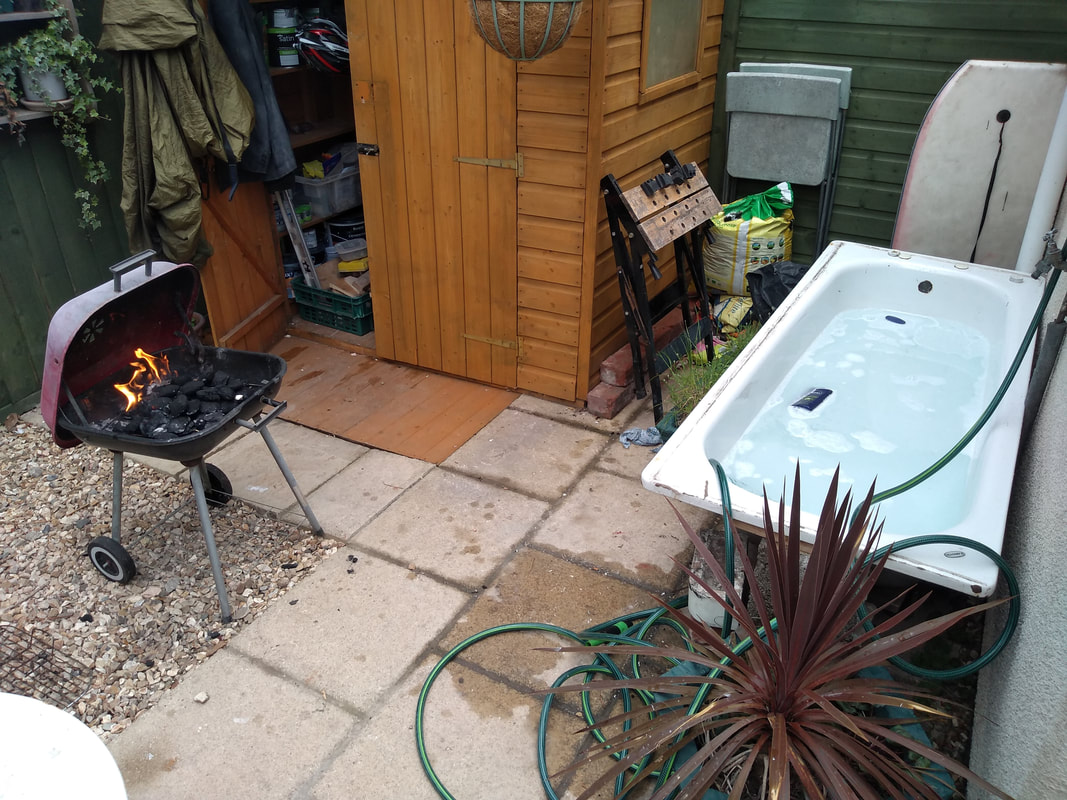
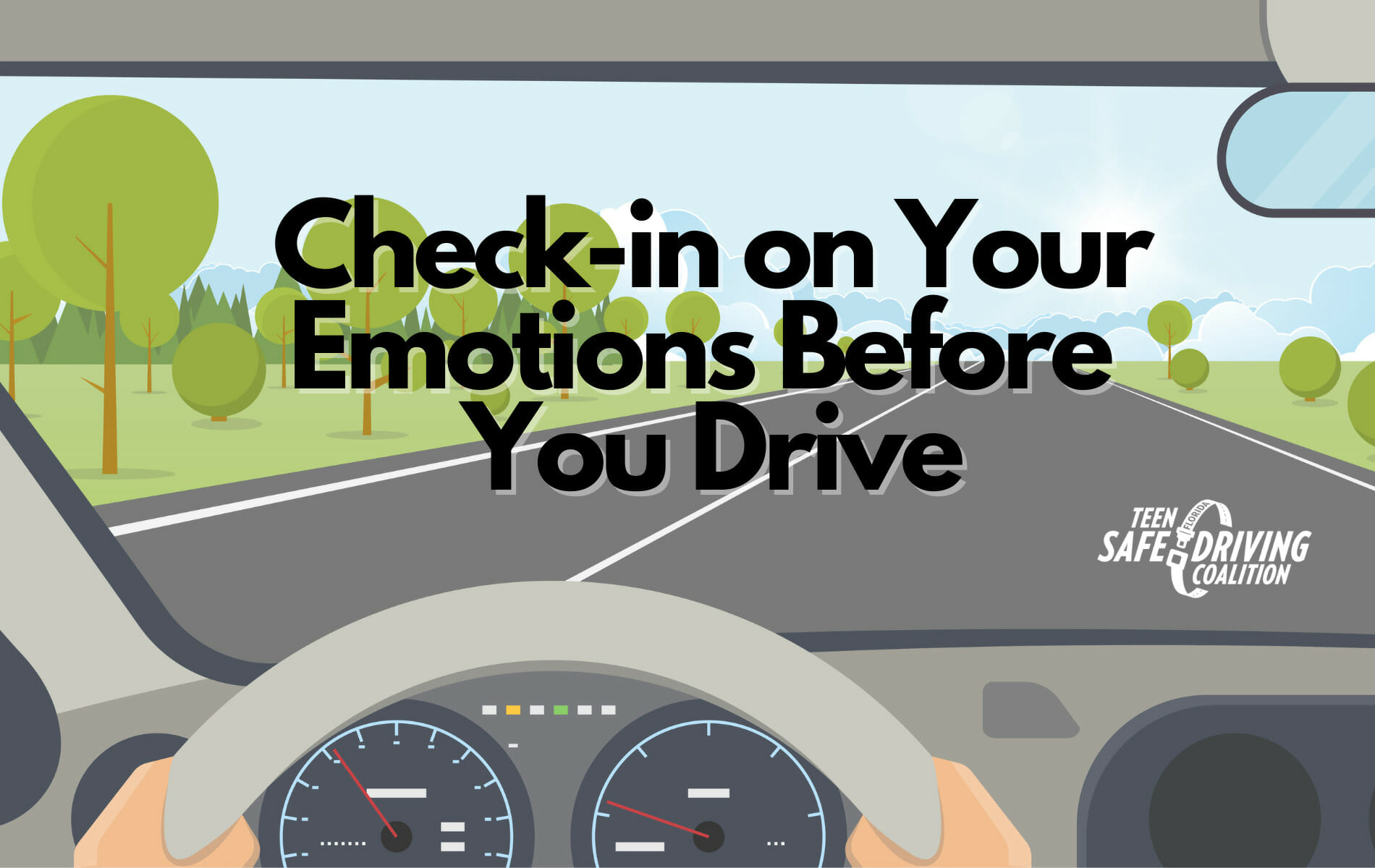
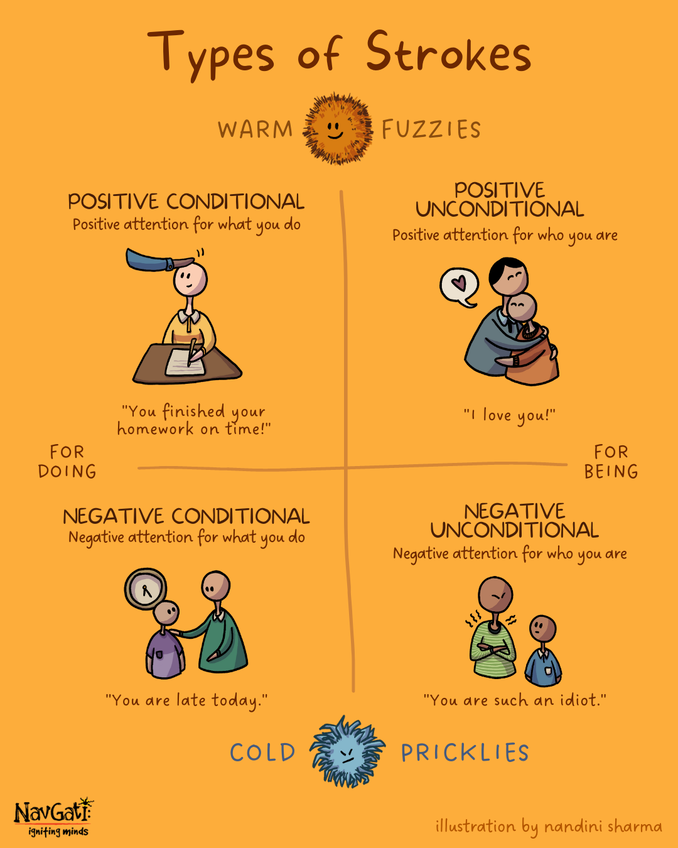
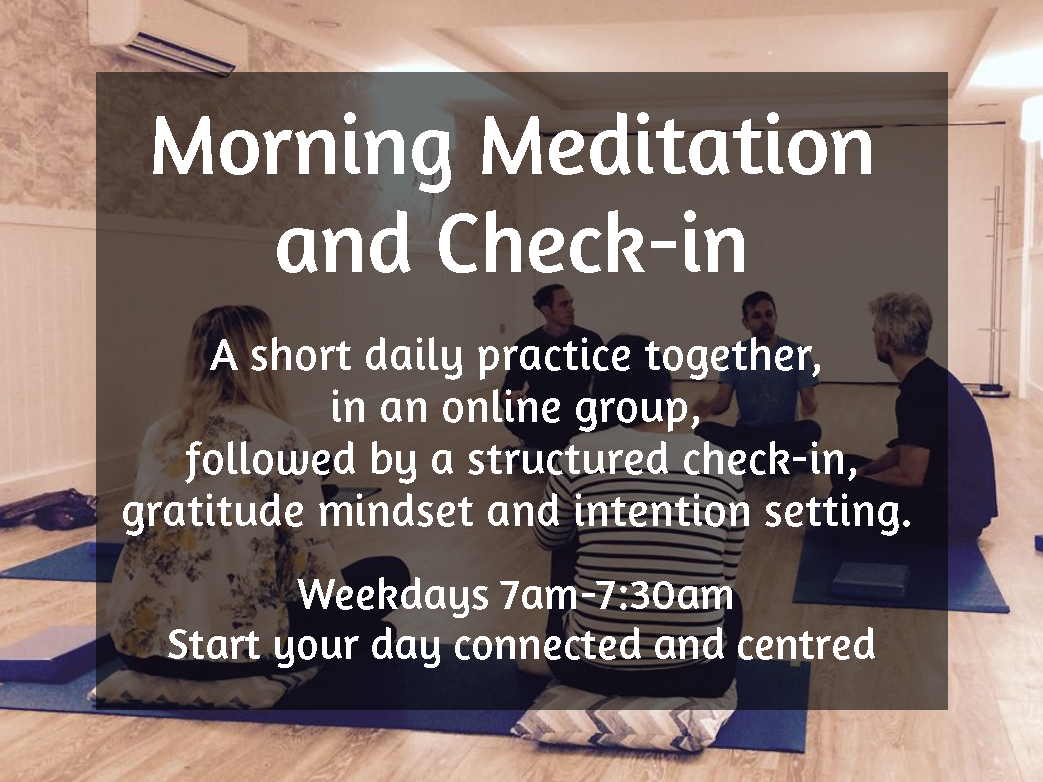


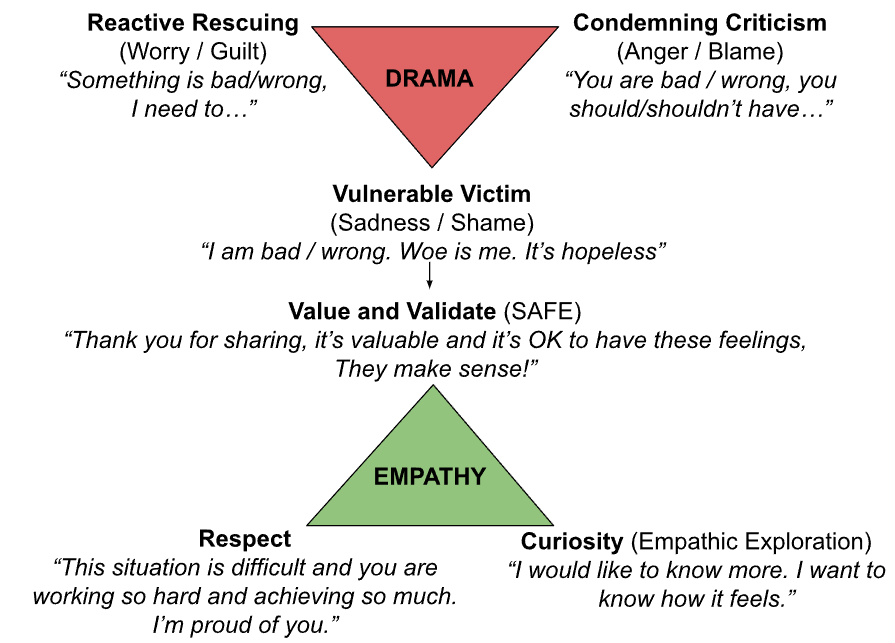
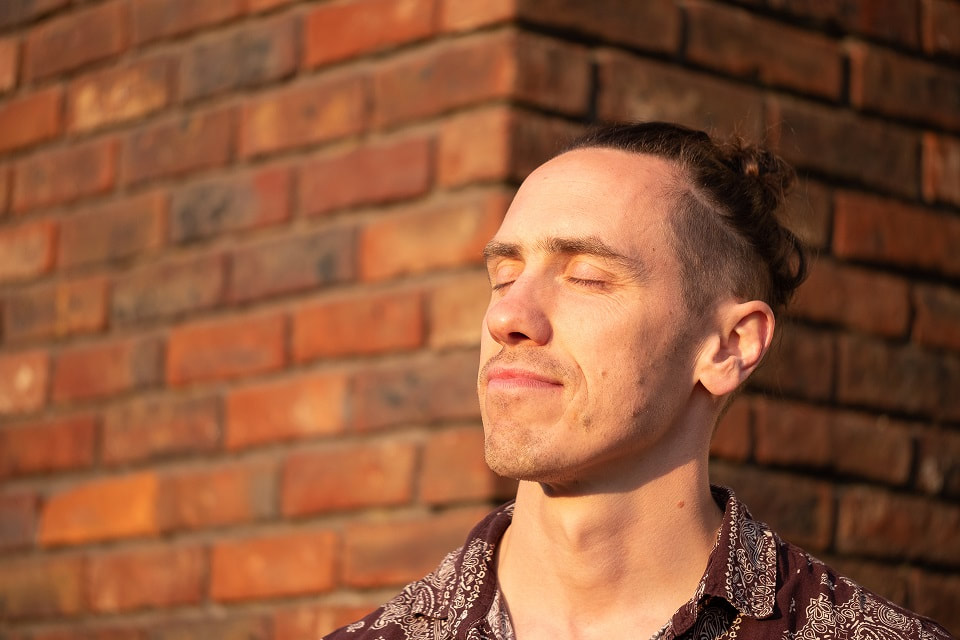
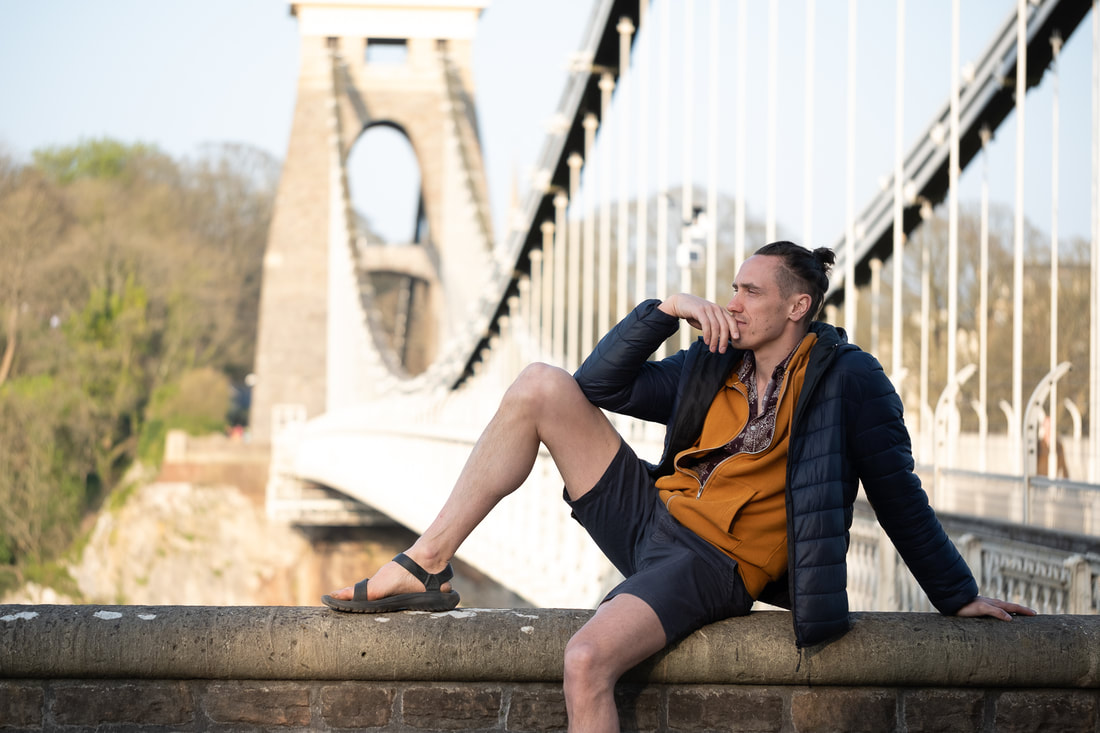
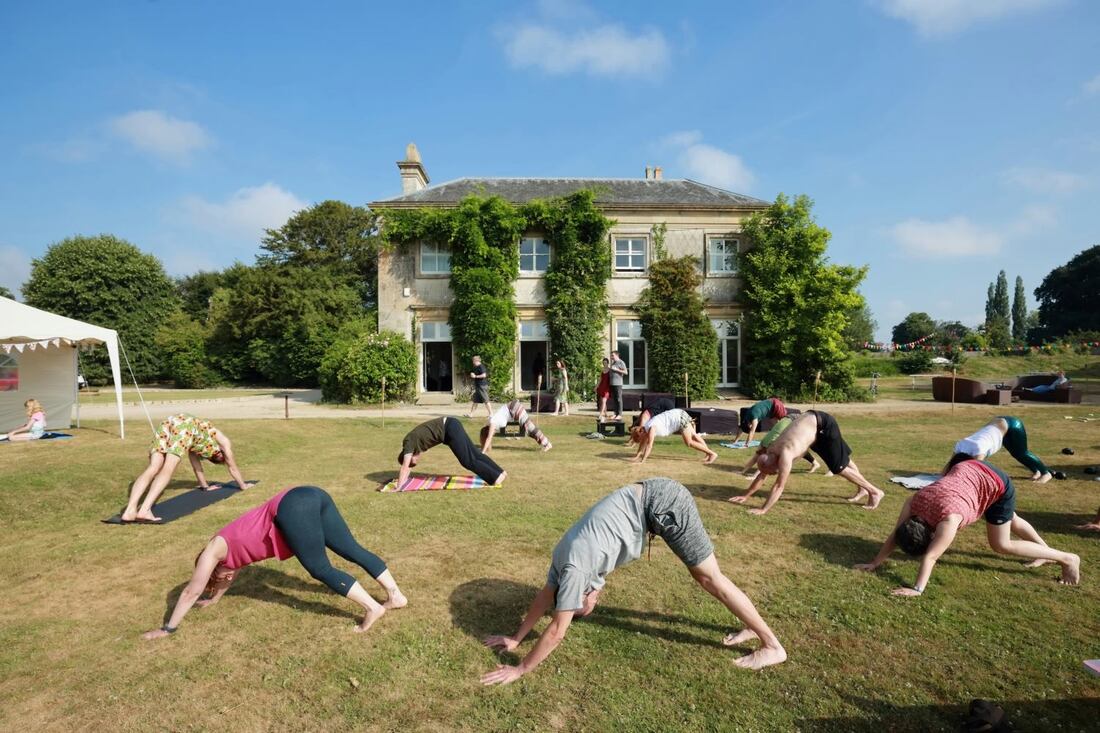

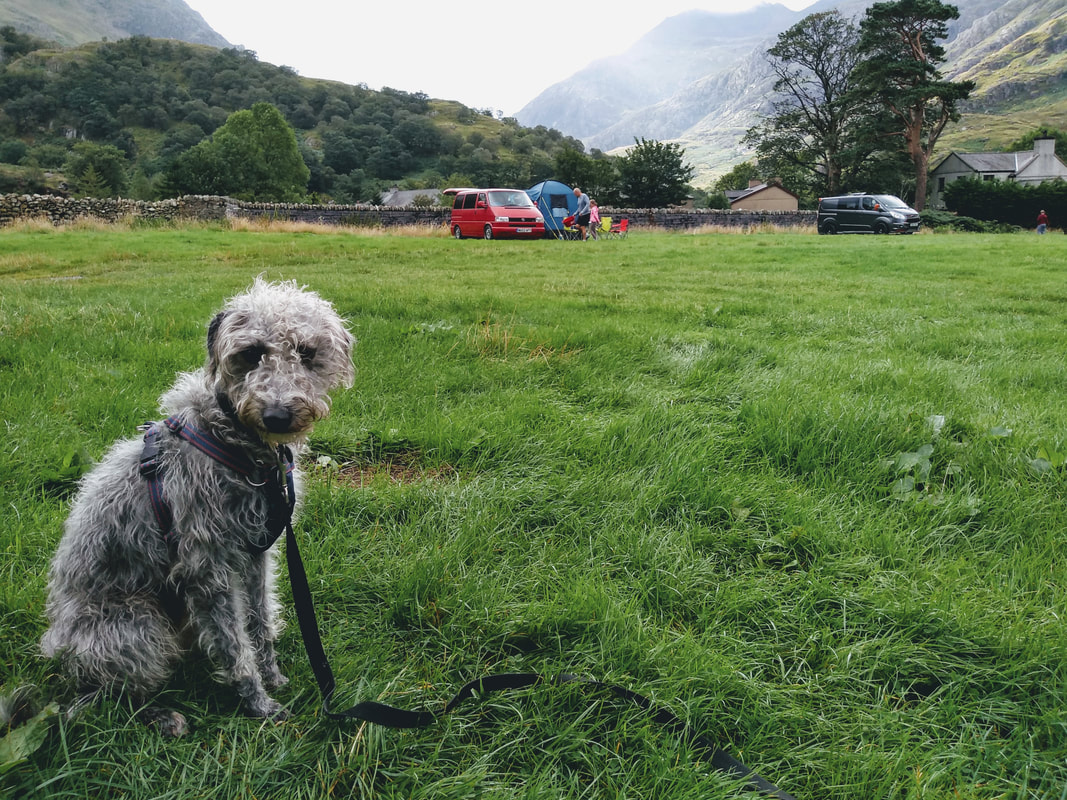
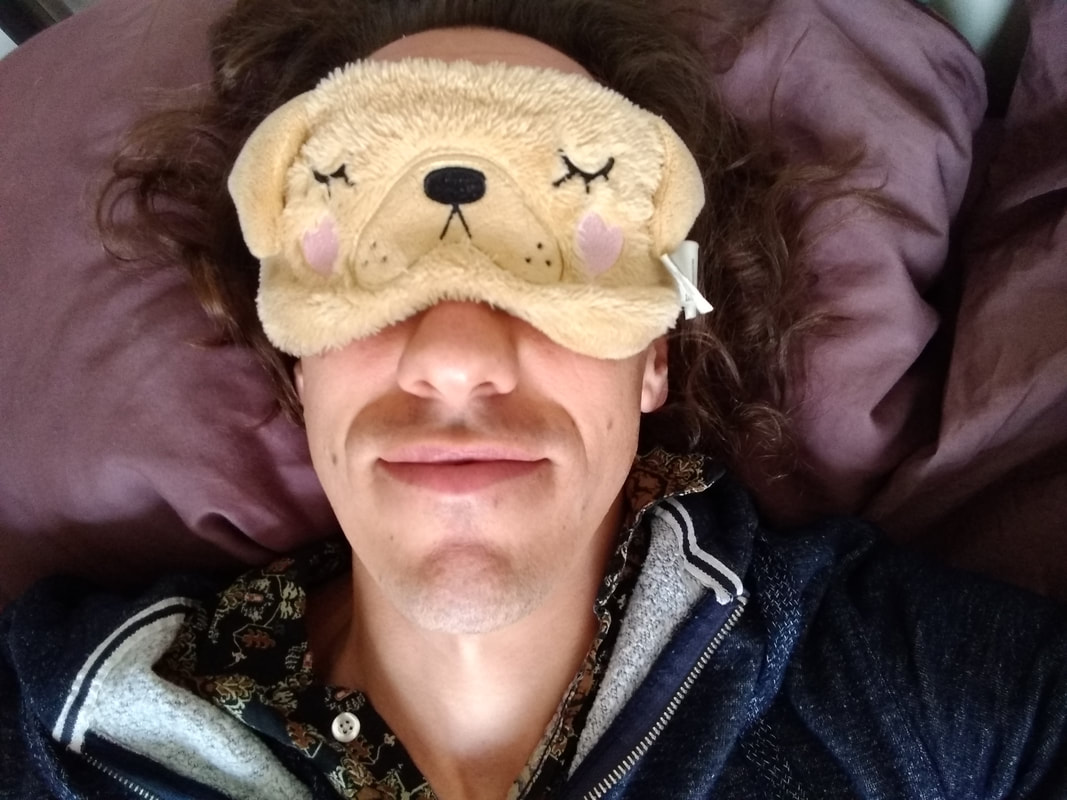

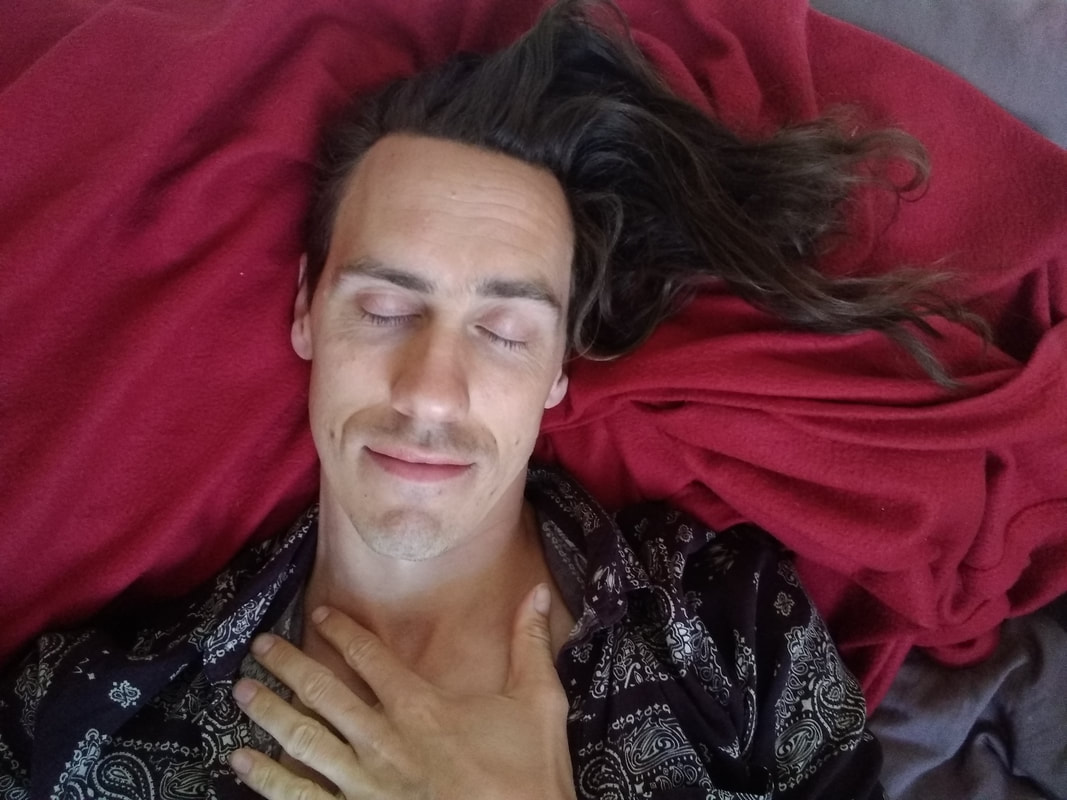
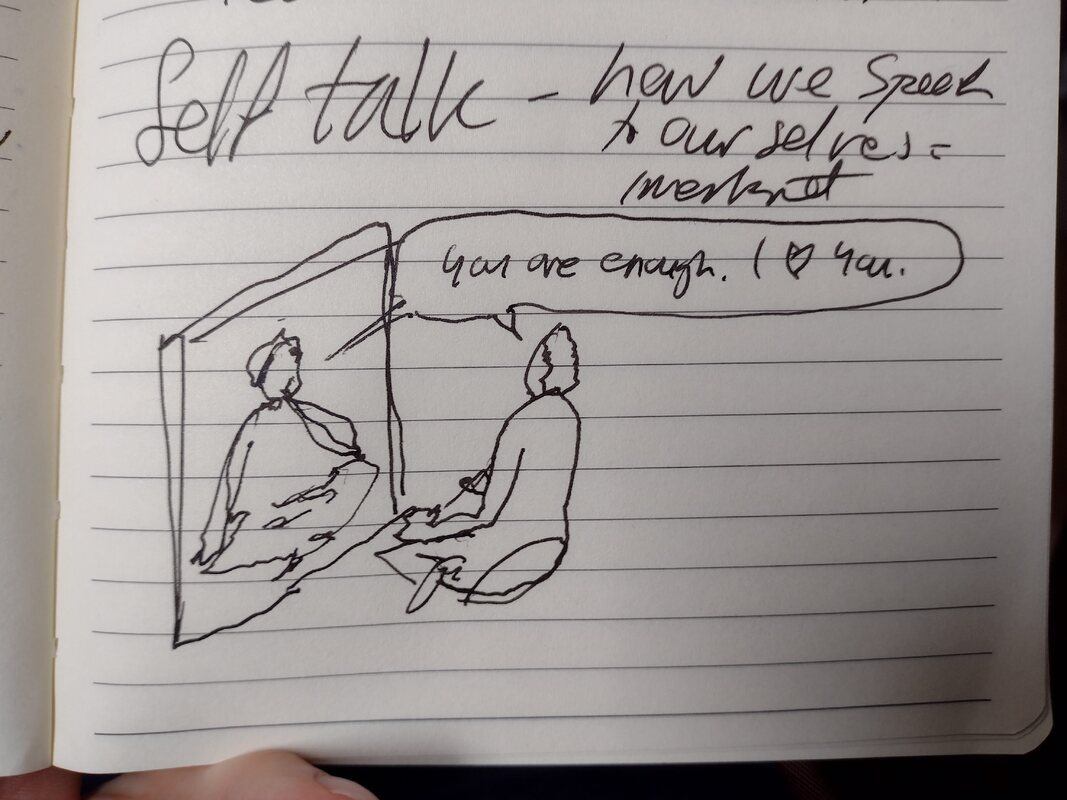
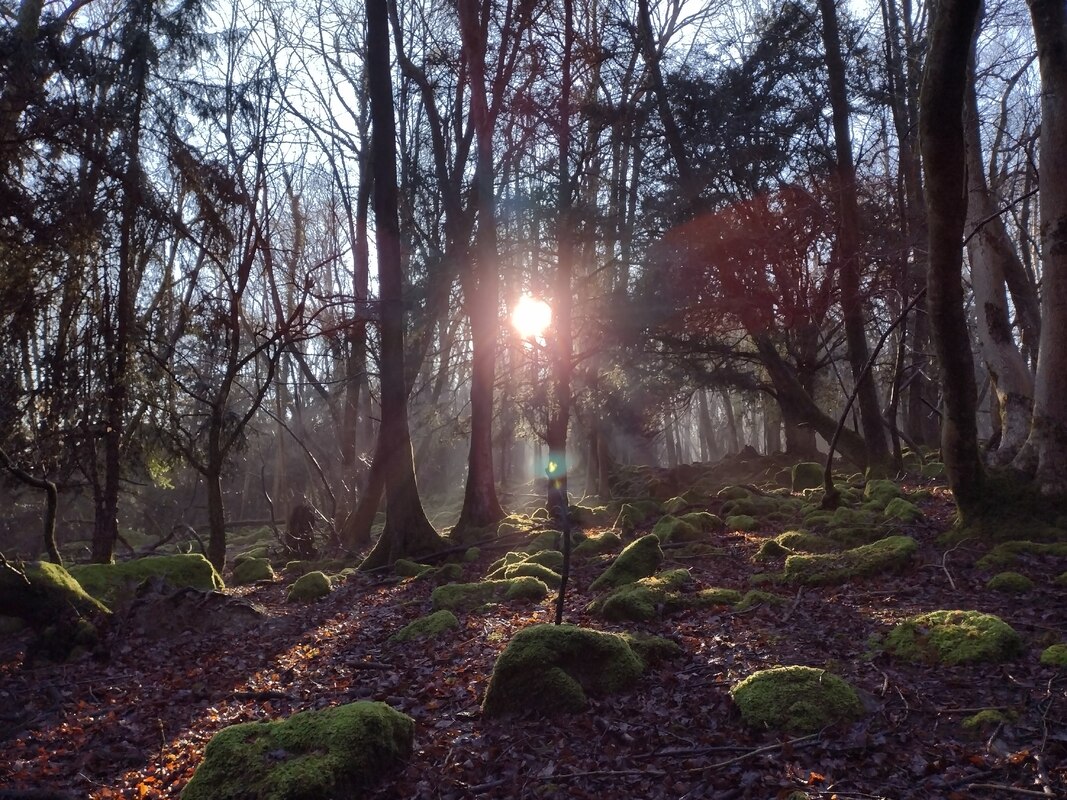


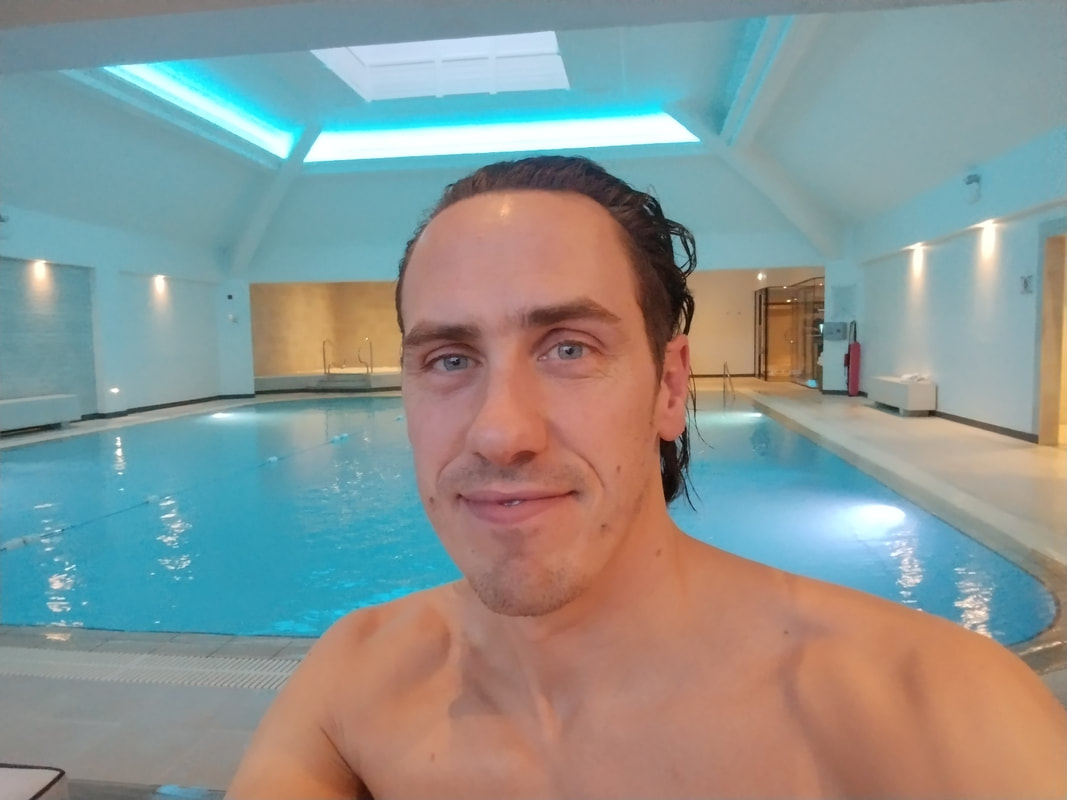


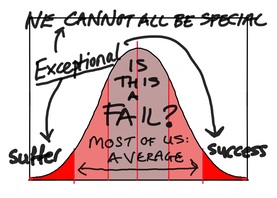
 RSS Feed
RSS Feed